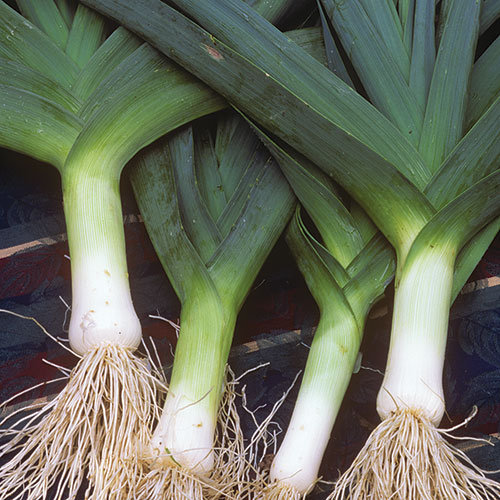
'Blue Solaise' Leek from Seed Savers.
Posted on 10/14/2021 7:45:34 AM PDT by Red Badger
A commonly available pesticide has been associated with an increased risk of chronic kidney disease (CKD) in a University of Queensland study.
Researchers analyzed links between pesticide exposure and the risk of kidney dysfunction in 41,847 people, using data from the U.S. National Health and Nutrition Examination Survey (NHANES).
School of Public Health Associate Professor Nicholas Osborne said the study found people exposed to higher amounts of the insecticide Malathion, known as Maldison in Australia, had 25 percent higher risk of kidney dysfunction.
"Nearly one in 10 people in high income countries show signs of CKD, which is permanent kidney damage and loss of renal function," Dr. Osborne said.
Risk factors of developing CKD include age, hypertension and diabetes.
Dr. Osborne said CKD with no known cause was rising in low-to-middle income countries such as India, Sri Lanka and Mesoamerica.
"Initially, it was suspected the condition was associated with agricultural workplaces through exposure to heat stress, dehydration, pesticide spraying, heavy metals and agrochemicals," Dr. Osborne said.
"However, environmental contamination, pesticide residues and herbal medicines potentially containing heavy metals may also be contributing to CKD."
The cause of increased CKD remains unknown but spraying pesticides without personal protective equipment (PPE) and working with contaminated soil have been suggested as likely exposure pathways.
Dr. Osborne said the UQ study was the first to provide evidence linking Malathion with risk of poor kidney health in humans.
"The findings suggest we should limit our exposure to pesticides, even in very small doses, as chronic exposure may lead to negative health outcomes," Dr. Osborne said.
"We will continue to investigate if other pesticides may be involved and are planning to collect data on Sri Lankan farmer behaviors to examine their level of exposure when using pesticides in the field."
Malathion is licensed for use in agriculture, domestic and public recreation areas as part of mosquito and fruit fly eradication programs, and can also be found in some topical head lice treatments.
The study is published in International Journal of Environmental Research and Public Health.
Explore further
Pollen patties may save bees poisoned by pesticides More information: En-Tzu Wan et al, Association of Pesticides and Kidney Function among Adults in the US Population 2001–2010, International Journal of Environmental Research and Public Health (2021). DOI: 10.3390/ijerph181910249
Journal information: International Journal of Environmental Research and Public Health
Provided by University of Queensland
Butt butt it’s got what plants crave.😋
I found that leeks, when they blossomed, were both pretty and beneficial. All sorts of bees came to them, and the bees kept the Japanese beetles away.
Thank you. You are a one woman plant & every thing related encyclopedia. All of your tips in this thread,this is a keeper!
Oooh, I want to plant hydrangeas. I think they’re beautiful.
Real farmers use Paraquat!
The lawyers paid for the study to enable class action establishment of a lawyer welfare money pot
Lawyers are enemies. Both sides benefit from a lawsuit
Call Morgan & Morgan!...........................
My cousin and his son both died at 39 from throat cancer from chewing tobaccos.............................
Great, another reason for more lawyer commercials.....
Between lawyers and car dealers, TV stations would go broke if they ever quit.....................
“Diatomaceous earth”
And if you’re using it around your chickens, which helps fight fleas and ticks, make sure you get the ‘food grade’ variety.
I see they pimp DE it as a food supplement for humans now, too! Seems odd to me - I mean there are minerals in it, but it’s basically silica, or SAND!
“What is Diatomaceous Earth?
Also known as DE, Diatomaceous Earth is a form of sedimentary rock that builds the plankton in oceans and ponds. It is being formed from fossilized remains that are known as diatoms. These tiny sea creatures lived and died by the millions. They collected on the bottom of the sea until they became one with the land. This goes back to the Jurassic period.
When observed, diatomaceous looks exactly like a fine powder. It is a light substance with a high porosity. However, DE goes beyond being just a fine powder. When placed under microscope, the glass looking fine shards of silica can be observed.”
https://diatomaceous.org/what-is-food-grade-diatomaceous-earth/
Red Badger: Maybe I’ll add a sprinkling of DE to my Malathion-covered asbestos shingle - for the health benefits, LOL! ;)
Thanks for the kind words! I DID pay attention in my Master Gardener classes - also 18 years of hands-on experience helps a lot!
Some people remember sports statistics, my brain is wired for plant-related stuff. And yarn. And that’s about it, LOL! ;)

'Blue Solaise' Leek from Seed Savers.
I have heard it’s supposed to be used for internal parasites.
I am exceedingly careful, however, when using it to not breathe it in.
I have heard it’s supposed to be used for internal parasites.
I am exceedingly careful, however, when using it to not breathe it in.
LOL!
My memory is of flinging them into a fire where they would explode very satisfactorially.
Disclaimer: Opinions posted on Free Republic are those of the individual posters and do not necessarily represent the opinion of Free Republic or its management. All materials posted herein are protected by copyright law and the exemption for fair use of copyrighted works.